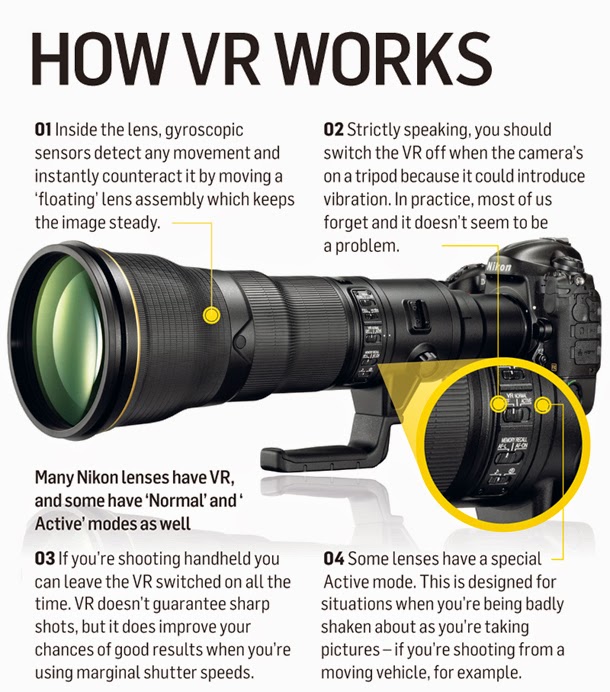When to shoot handheld: free cheat sheet
 |
| Click to see it Clearly |
You can often achieve striking creative effects with subject movement, but camera movement (or ‘camera shake’) just produces an unattractive all-over blur where nothing in the picture is sharp.
There is an easy way to work out the minimum shutter speed for handheld photography, based simply on the focal length you’re using (or effective focal length, if you’re using a crop sensor camera, like the DX-format Nikons in the cheat sheet above).
For example, if you’re shooting at a focal length of 30mm, 1/30 sec is the slowest ‘safe’ speed for handheld photography. If you’re shooting with a 500mm lens, it’s 1/500 sec.
Of course, many lenses have built-in stabilisation features like Nikon’s VR, or ‘Vibration Reduction’ systems. These reduce the effects of shake and allow you to use shutter speeds two to four steps slower than normal.
You have to remember that although this will stop camera movement, it has no effect on subject movement. If you want to freeze a fast-moving subject, you’ll still need a fast shutter speed, with or without VR.
You can use our table, above, to work out the minimum ‘safe’ speeds for different lenses. We allow an extra two steps for lenses with VR – you may get more, but it’s best to be conservative.
How Vibration Reduction(VR) works
01 Inside the lens, gyroscopic sensors detect any movement and instantly counteract it by moving a ‘floating’ lens assembly which keeps the image steady.02 Strictly speaking, you should switch the VR off when the camera’s on a tripod because it could introduce vibration. In practice, most of us forget and it doesn’t seem to be a problem.
03 If you’re shooting handheld you can leave the VR switched on all the time. VR doesn’t guarantee sharp shots, but it does improve your chances of good results when you’re using marginal shutter speeds.
04 Some lenses have a special Active mode. This is designed for situations when you’re being badly shaken about as you’re taking pictures – if you’re shooting from a moving vehicle, for example.
Understanding camera shake and focal length
The amount of shake is the same when taking all these shots – it’s the magnification that makes it look worse
 |
| Click to See on Large Scale |

No comments:
Post a Comment